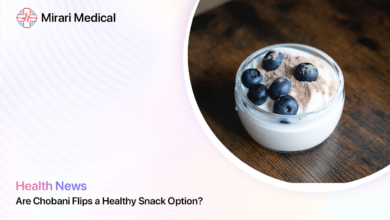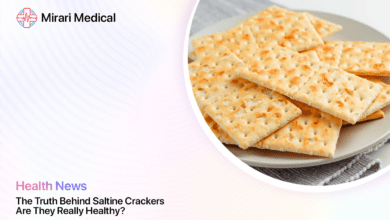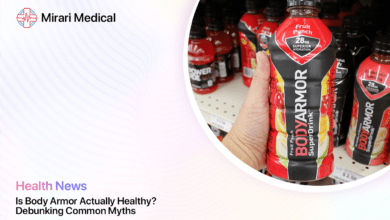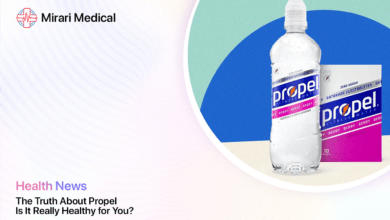Are Premier Protein Shakes Really Healthy for You?
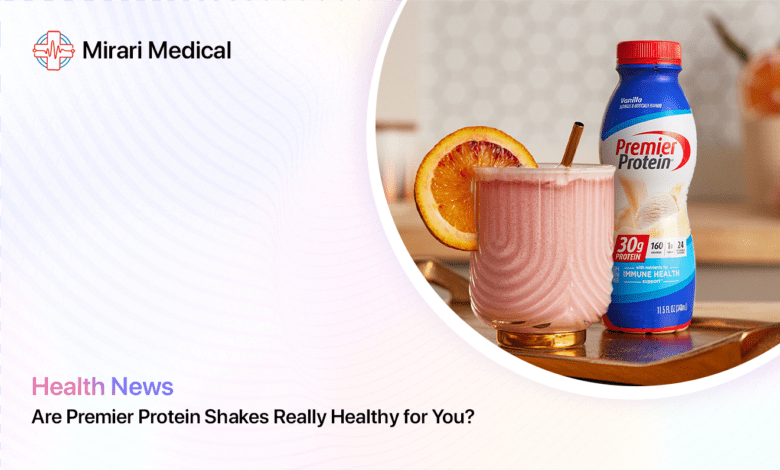
You may be interested
Did you know that a single serving of Premier Protein shake contains more protein than three large eggs? With 30 grams of protein packed into each 11-ounce bottle, these popular shakes have become a go-to choice for many people looking to boost their protein intake. But are they truly a healthy option? Let’s dive deep into the world of Premier Protein shakes and uncover the truth behind their nutritional value and potential health impacts.
Introduction
In today’s fast-paced world, protein shakes have become increasingly popular as a convenient way to meet our daily nutritional needs. Among the many brands available, Premier Protein has emerged as a frontrunner, boasting high protein content and a variety of flavors. But as health-conscious consumers, we need to ask: Are Premier Protein shakes really as healthy as they claim to be?
In this comprehensive guide, we’ll explore the ins and outs of Premier Protein shakes, examining their ingredients, nutritional profile, potential benefits, and possible drawbacks. We’ll also compare them to other protein supplements and discuss how they fit into a balanced diet. Whether you’re a fitness enthusiast, a busy professional, or someone simply looking to improve your nutrition, this article will help you make an informed decision about incorporating Premier Protein shakes into your lifestyle.
What Are Premier Protein Shakes?
Premier Protein shakes are ready-to-drink beverages designed to provide a quick and convenient source of protein. These shakes are marketed as a tasty and nutritious option for those looking to increase their protein intake, support muscle growth and recovery, or manage their weight.
Key features of Premier Protein shakes include:
- 30 grams of protein per 11-ounce serving
- Low in sugar (typically 1 gram per serving)
- 160 calories per shake
- 24 vitamins and minerals
- Available in a variety of flavors
Premier Protein shakes are often used as:
- A post-workout recovery drink
- A meal replacement for weight management
- A quick breakfast or snack option
- A protein boost for smoothies or recipes
The brand offers a wide range of flavors, including classics like chocolate and vanilla, as well as more unique options such as caramel, café latte, and seasonal varieties like pumpkin spice. This variety of flavors has contributed to the popularity of Premier Protein shakes, as it allows consumers to find options that suit their taste preferences.
While the high protein content and low sugar levels are attractive features, it’s important to look beyond these numbers and examine the overall nutritional profile and ingredients to determine whether Premier Protein shakes are truly a healthy choice.
What Are The Ingredients In Premier Protein Shakes?
To understand whether Premier Protein shakes are a healthy choice, we need to take a closer look at their ingredients. The exact formulation may vary slightly between flavors, but here’s a general overview of what you’ll find in a typical Premier Protein shake:
- Water: The primary ingredient, used as the base of the shake.
- Protein Blend: Usually consisting of:
- Milk protein concentrate
- Calcium caseinate
- Whey protein concentrate
- Cocoa powder (in chocolate flavors): Processed with alkali for flavor.
- Less than 1% of:
- High oleic sunflower oil
- Inulin (from chicory root)
- Cellulose gel and cellulose gum (thickeners)
- Salt
- Natural and artificial flavors
- Sucralose and acesulfame potassium (artificial sweeteners)
- Carrageenan (thickener)
- Various phosphates (stabilizers)
- Vitamin and mineral blend
Let’s break down some of these ingredients:
Protein Sources
The protein in Premier Protein shakes comes from milk-based sources. This provides a complete amino acid profile, which is beneficial for muscle growth and repair. However, it also means these shakes are not suitable for those with dairy allergies or following a vegan diet.
Sweeteners
Premier Protein shakes use artificial sweeteners like sucralose and acesulfame potassium to keep the sugar content low while maintaining a sweet taste. While these sweeteners are FDA-approved, some people prefer to avoid artificial additives in their diet.
Thickeners and Stabilizers
Ingredients like cellulose gel, cellulose gum, and carrageenan are used to improve the texture and stability of the shakes. While generally recognized as safe, some individuals may be sensitive to these additives.
Vitamins and Minerals
Premier Protein shakes are fortified with various vitamins and minerals, including:
- Vitamin A
- Vitamin C
- Vitamin D
- Vitamin E
- B-complex vitamins
- Calcium
- Iron
- Zinc
- Magnesium
This fortification contributes to the nutritional profile of the shakes, potentially helping consumers meet their daily nutrient requirements.
While many of these ingredients are common in processed foods and supplements, some health-conscious consumers may prefer products with fewer additives and more whole food ingredients. It’s important to consider your personal health goals and dietary preferences when evaluating the ingredient list of Premier Protein shakes.
Are Premier Protein Shakes Healthy?
Determining whether Premier Protein shakes are truly healthy requires a nuanced look at their nutritional profile, potential benefits, and possible drawbacks. Let’s break this down into pros and cons to get a clearer picture.
What Are The Benefits Of Premier Protein Shakes?
- High Protein Content: With 30 grams of protein per serving, Premier Protein shakes can help meet daily protein needs, which is essential for muscle maintenance and growth[1].
- Low in Sugar: Containing only 1 gram of sugar per shake, they’re a good option for those monitoring their sugar intake or managing blood glucose levels.
- Calorie Control: At 160 calories per shake, they can be a useful tool for weight management when used as part of a balanced diet.
- Vitamin and Mineral Fortification: The shakes provide 24 vitamins and minerals, which can help fill nutritional gaps in the diet.
- Convenience: Ready-to-drink format makes it easy to consume protein on-the-go, which can be beneficial for busy lifestyles.
- Variety of Flavors: The wide range of flavors can make it easier to consistently consume protein without flavor fatigue.
- Lactose-Free: Despite containing milk proteins, the shakes are lactose-free, making them suitable for some individuals with lactose intolerance.
What Are The Potential Risks Of Premier Protein Shakes?
- Highly Processed: Premier Protein shakes are a processed food product, which some nutrition experts recommend limiting in the diet[2].
- Artificial Sweeteners: The use of sucralose and acesulfame potassium may be a concern for some, as the long-term effects of these sweeteners are still being studied[3].
- Additives: Ingredients like carrageenan and various gums may cause digestive issues in sensitive individuals[4].
- Potential for Overconsumption: The convenience of these shakes might lead some people to rely on them too heavily, potentially displacing whole foods from the diet.
- Allergen Concerns: Contains milk proteins, making them unsuitable for those with dairy allergies or following a vegan diet.
- Lead Contamination Concerns: In 2023, a class-action lawsuit was filed against BellRing Brands (Premier Protein’s parent company) alleging high levels of lead in their protein shakes[5]. While the case is ongoing, it has raised concerns about product safety.
- Not a Whole Food: While nutritionally balanced, these shakes don’t provide the same benefits as whole food protein sources, which offer additional nutrients and fiber.
When considering whether Premier Protein shakes are healthy, it’s important to remember that “healthy” can mean different things to different people based on their individual nutritional needs, health goals, and dietary preferences. For someone looking to increase their protein intake conveniently, these shakes might be a good fit. However, for someone focused on eating minimally processed foods or avoiding artificial additives, they may not align with their definition of healthy.
Ultimately, Premier Protein shakes can be part of a healthy diet for many people when consumed in moderation and as part of a balanced eating plan that includes a variety of whole foods. However, they should not be relied upon as a primary source of nutrition. As with any dietary change or supplement, it’s always a good idea to consult with a registered dietitian or healthcare provider to determine if Premier Protein shakes are a good fit for your individual needs and health goals.
How Do Premier Protein Shakes Compare To Other Protein Shakes?
When evaluating Premier Protein shakes, it’s helpful to compare them to other types of protein supplements on the market. Let’s look at how they stack up against whey protein shakes and plant-based protein shakes.
What Are The Differences Between Premier Protein Shakes And Whey Protein Shakes?
Premier Protein shakes and traditional whey protein shakes have some similarities but also key differences:
- Protein Source:
- Premier Protein: Uses a blend of milk protein concentrate, calcium caseinate, and whey protein concentrate.
- Whey Protein Shakes: Typically use whey protein isolate or concentrate as the primary protein source.
- Protein Content:
- Premier Protein: 30 grams per 11 oz serving.
- Whey Protein: Varies, but often ranges from 20-30 grams per serving.
- Ready-to-Drink vs. Powder:
- Premier Protein: Comes in a ready-to-drink format.
- Whey Protein: Usually sold as a powder to be mixed with water or milk.
- Additional Nutrients:
- Premier Protein: Fortified with vitamins and minerals.
- Whey Protein: Often focused solely on protein, though some brands may add vitamins or other supplements.
- Sugar Content:
- Premier Protein: 1 gram of sugar per serving.
- Whey Protein: Varies widely, from 0 to 10+ grams depending on the brand and flavor.
- Additives:
- Premier Protein: Contains artificial sweeteners and stabilizers.
- Whey Protein: May contain fewer additives, especially in unflavored versions.
- Digestibility:
- Premier Protein: The protein blend may be easier to digest for some people compared to pure whey.
- Whey Protein: Fast-absorbing, but may cause digestive issues for some individuals, especially those with lactose sensitivity.
What Are The Differences Between Premier Protein Shakes And Plant-based Protein Shakes?
The differences between Premier Protein shakes and plant-based protein shakes are more pronounced:
- Protein Source:
- Premier Protein: Dairy-based (milk proteins and whey).
- Plant-based: Typically use pea, rice, hemp, or soy protein, or a blend of these.
- Protein Quality:
- Premier Protein: Contains all essential amino acids in optimal ratios.
- Plant-based: May need to combine different plant proteins to achieve a complete amino acid profile.
- Allergens:
- Premier Protein: Contains milk proteins, not suitable for dairy allergies or vegans.
- Plant-based: Often free from common allergens like dairy and soy (depending on the brand).
- Nutrient Profile:
- Premier Protein: High in calcium and B12 due to milk content.
- Plant-based: Often higher in fiber and may contain more varied micronutrients depending on the plant sources used.
- Environmental Impact:
- Premier Protein: Dairy production generally has a higher environmental footprint.
- Plant-based: Often considered more environmentally friendly.
- Taste and Texture:
- Premier Protein: Creamy texture, milk-like taste.
- Plant-based: Texture can vary, may have an earthier taste depending on the protein source.
- Digestibility:
- Premier Protein: May cause issues for those with lactose intolerance.
- Plant-based: Generally easier to digest, but some people may experience bloating with certain plant proteins.
When choosing between these options, consider your dietary needs, preferences, and any food sensitivities you may have. Premier Protein shakes offer convenience and a complete protein source but come with more additives. Whey protein powders offer flexibility in preparation and often fewer additives but require mixing. Plant-based options cater to vegan diets and may offer additional nutrients but may not match the amino acid profile of animal-based proteins.
Remember, the “best” choice depends on your individual needs and goals. Consulting with a registered dietitian can help you determine which type of protein supplement, if any, is most appropriate for your lifestyle and health objectives.
How Do Premier Protein Shakes Fit Into A Healthy Diet?
Incorporating Premier Protein shakes into a healthy diet requires thoughtful consideration. While these shakes can be a convenient source of protein, they should not replace whole foods entirely. Here’s how you can potentially fit Premier Protein shakes into a balanced eating plan:
- Post-Workout Recovery: Consume a shake within 30 minutes after exercise to support muscle recovery and growth.
- Breakfast On-the-Go: If you’re rushing in the morning, a Premier Protein shake can provide a quick protein boost. Pair it with a piece of fruit or whole grain toast for a more balanced meal.
- Snack Option: Use half a shake as a protein-rich snack between meals to help manage hunger and maintain stable blood sugar levels.
- Protein Boost for Smoothies: Add half a Premier Protein shake to your homemade fruit and vegetable smoothies for extra protein without significantly altering the taste.
- Recipe Ingredient: Use Premier Protein shakes in recipes like protein pancakes or overnight oats to increase the protein content of these dishes.
Remember, while Premier Protein shakes can be part of a healthy diet, they should not be the primary source of nutrition. A balanced diet should include a variety of whole foods such as:
- Lean meats, fish, and poultry
- Fruits and vegetables
- Whole grains
- Legumes
- Nuts and seeds
- Dairy or dairy alternatives
These whole foods provide not only protein but also fiber, healthy fats, and a wide range of vitamins and minerals that are essential for overall health.
Can Premier Protein Shakes Help With Weight Loss?
Premier Protein shakes may be helpful for some people as part of a weight loss plan, but they are not a magic solution. Here’s how they might contribute to weight loss efforts:
- Calorie Control: At 160 calories per shake, they can be a lower-calorie alternative to some meals or snacks.
- High Protein Content: The 30 grams of protein per shake can help increase feelings of fullness and reduce overall calorie intake[6].
- Convenience: Having a ready-to-drink option can prevent impulsive high-calorie food choices when you’re busy or on-the-go.
- Low Sugar: With only 1 gram of sugar per shake, they don’t contribute significantly to daily sugar intake.
However, it’s crucial to remember that sustainable weight loss comes from a balanced diet and regular physical activity, not from any single food or drink. Premier Protein shakes should be used as a tool within a comprehensive weight loss plan, not as the sole strategy.
Can Premier Protein Shakes Be Used As A Meal Replacement?
While Premier Protein shakes are sometimes marketed as meal replacements, they are not nutritionally complete enough to regularly replace whole food meals. Here’s why:
- Calorie Content: At 160 calories, a single shake is too low in calories to constitute a meal for most adults.
- Lack of Fiber: Premier Protein shakes contain minimal fiber, which is essential for digestive health and feeling full.
- Limited Healthy Fats: The shakes are low in fat, including healthy fats that are important for hormone function and nutrient absorption.
- Missing Phytonutrients: Whole foods contain a variety of phytonutrients that aren’t found in protein shakes.
If you do use Premier Protein shakes as an occasional meal replacement, it’s important to supplement them with additional nutrients. For example:
- Add a piece of fruit and a handful of nuts for fiber, healthy fats, and additional vitamins and minerals.
- Pair the shake with a small salad to increase vegetable intake and provide essential phytonutrients.
- Include a whole grain toast or crackers to add complex carbohydrates and more fiber.
It’s important to note that regularly replacing meals with protein shakes can lead to missing out on important nutrients found in whole foods. The American Dietetic Association recommends that meal replacement products should not replace more than two meals per day[7].
What Are Some Alternatives To Premier Protein Shakes?
While Premier Protein shakes can be a convenient option, there are many alternatives available for those looking to increase their protein intake or find healthier meal replacement options. Let’s explore some of these alternatives:
Are There Any Natural Alternatives To Premier Protein Shakes?
Yes, there are several natural alternatives that can provide similar nutritional benefits without the processed ingredients found in Premier Protein shakes:
- Greek Yogurt: High in protein and probiotics, Greek yogurt can be flavored with fresh fruit and a drizzle of honey for a natural protein-rich snack.
- Cottage Cheese: Another excellent source of protein that can be eaten plain or mixed with fruits and nuts for added nutrition and flavor.
- Hard-Boiled Eggs: Easy to prepare in advance, eggs are a complete protein source and rich in vitamins and minerals.
- Nut Butter on Whole Grain Toast: This combination provides protein, healthy fats, and complex carbohydrates.
- Hummus with Vegetable Sticks: A plant-based option that offers protein, fiber, and a variety of nutrients from the vegetables.
- Edamame: These young soybeans are a great plant-based protein source that can be eaten as a snack or added to salads.
- Protein-Rich Smoothies: Blend milk or a plant-based alternative with fruits, leafy greens, and a scoop of natural protein powder (like unflavored whey or pea protein) for a nutrient-dense shake.
These natural alternatives not only provide protein but also offer additional nutrients and fiber that are not found in processed protein shakes.
Are There Any Homemade Protein Shake Recipes?
Absolutely! Making your own protein shakes at home allows you to control the ingredients and tailor the nutritional profile to your needs. Here are a few simple recipes to try:
- Berry Protein Blast
- 1 cup unsweetened almond milk
- 1 scoop vanilla protein powder
- 1 cup mixed berries (fresh or frozen)
- 1 tablespoon chia seeds
- Handful of spinach (optional for added nutrients)
- Ice cubes
- Chocolate Banana Protein Smoothie
- 1 ripe banana
- 1 cup milk (dairy or plant-based)
- 1 scoop chocolate protein powder
- 1 tablespoon unsweetened cocoa powder
- 1 tablespoon peanut butter
- Ice cubes
- Green Protein Machine
- 1 cup unsweetened coconut water
- 1 scoop unflavored or vanilla protein powder
- 1 cup baby spinach
- 1/2 avocado
- 1/2 green apple
- Juice of 1/2 lemon
- Ice cubes
- Oatmeal Cookie Protein Shake
- 1 cup oat milk
- 1 scoop vanilla protein powder
- 1/4 cup rolled oats
- 1 tablespoon almond butter
- 1/2 teaspoon cinnamon
- 1 date (pitted)
- Ice cubes
- Tropical Protein Paradise
- 1 cup coconut milk
- 1 scoop vanilla protein powder
- 1/2 cup pineapple chunks
- 1/2 mango
- 1 tablespoon shredded coconut
- Ice cubes
To prepare these shakes, simply blend all ingredients until smooth. You can adjust the liquid content to achieve your desired consistency.
These homemade protein shakes offer several advantages over pre-made options like Premier Protein:
- Control over ingredients: You can avoid artificial sweeteners and preservatives.
- Freshness: Made-to-order shakes contain fresh fruits and vegetables, providing additional nutrients and fiber.
- Customization: You can adjust the protein content, sweetness, and flavors to your liking.
- Cost-effective: Making your own shakes can be more economical in the long run.
- Variety: You can easily switch up ingredients to prevent flavor fatigue and ensure a wide range of nutrients.
Remember, while homemade protein shakes can be a healthy addition to your diet, they should still be consumed as part of a balanced eating plan that includes a variety of whole foods. If you have specific dietary needs or health concerns, it’s always a good idea to consult with a registered dietitian before making significant changes to your diet.
FAQs
Are Premier Protein shakes good or bad for you?
Premier Protein shakes can be both good and bad, depending on your individual needs and how they’re used. They’re good in that they provide a convenient source of protein and are fortified with vitamins and minerals. They’re low in sugar and can help with muscle recovery and weight management when used appropriately. However, they’re highly processed, contain artificial sweeteners, and shouldn’t replace whole foods in your diet. The potential for lead contamination, as highlighted in a recent lawsuit, is also a concern. Overall, they can be part of a healthy diet when used in moderation, but shouldn’t be relied upon as a primary source of nutrition.
What is the #1 rated protein shake?
The “#1 rated” protein shake can vary depending on the criteria used for rating and the source of the rating. Different shakes may be preferred for different purposes (weight loss, muscle gain, meal replacement, etc.). Some highly rated brands include Optimum Nutrition, Orgain, and Vega, but Premier Protein often ranks well in taste tests and for its nutritional profile. It’s important to choose a protein shake that aligns with your personal health goals and dietary preferences, rather than relying solely on ratings.
What is the Premier Protein shake lawsuit?
In 2023, a class-action lawsuit was filed against BellRing Brands, the parent company of Premier Protein, alleging that their protein shakes contain high levels of lead and cadmium[5]. The lawsuit claims that the company failed to disclose these heavy metal contents to consumers. It’s important to note that this lawsuit is ongoing, and the allegations have not been proven in court. This situation highlights the importance of being informed about the products we consume and the potential risks associated with processed foods.
Which is better Premier Protein shakes or muscle milk?
The choice between Premier Protein shakes and Muscle Milk depends on individual nutritional needs and preferences. Premier Protein typically has more protein (30g vs. 25g in Muscle Milk), fewer calories, and less sugar. However, Muscle Milk often contains more vitamins and minerals. Both are processed products with artificial ingredients. The “better” choice depends on your specific goals, dietary restrictions, and taste preferences. It’s always best to consult with a registered dietitian for personalized advice.
What is the healthiest type of protein shake?
The healthiest protein shake is one that aligns with your nutritional needs and is made from minimally processed ingredients. Generally, shakes made from whole food sources or with minimal additives are considered healthier. Plant-based options like pea or hemp protein can be good choices for those avoiding dairy. Whey protein isolate is often recommended for its complete amino acid profile. Ultimately, the healthiest shake is one that you’ll consume consistently as part of a balanced diet. Homemade shakes using natural ingredients and a high-quality protein powder are often the healthiest option.
Is it OK to drink 2 Premier Protein shakes a day?
While it’s generally safe for most people to drink two Premier Protein shakes a day, it’s not necessarily recommended as a long-term dietary strategy. Two shakes would provide 60 grams of protein and a significant amount of vitamins and minerals, which could be beneficial for some individuals, particularly those with high protein needs or difficulty meeting nutritional requirements through whole foods. However, this practice could also lead to an overreliance on processed foods and potentially displace other nutrient-rich whole foods from your diet. It’s important to consider your overall dietary intake and consult with a healthcare provider or registered dietitian before making this a regular habit.
Takeaways
Here are the key points to remember about Premier Protein shakes:
- They provide 30 grams of protein per serving, which can support muscle health and weight management.
- They’re low in sugar (1g) and calories (160), making them a potential aid in calorie control.
- Premier Protein shakes are fortified with vitamins and minerals, which can help fill nutritional gaps.
- They contain artificial sweeteners and other additives, which some people prefer to avoid.
- These shakes are highly processed and should not replace whole foods in your diet.
- They can be a convenient option for busy lifestyles but should be consumed in moderation.
- Homemade protein shakes or whole food alternatives can provide similar benefits with fewer processed ingredients.
- A recent lawsuit has raised concerns about potential heavy metal contamination in these products.
- While they can be part of a healthy diet, it’s important to consult with a healthcare professional or registered dietitian for personalized nutrition advice.
Remember, no single food or drink is a magic bullet for health. The best approach is always a balanced diet rich in whole foods, combined with regular physical activity and lifestyle habits that support overall well-being.
References
- Pasiakos SM, McLellan TM, Lieberman HR. The effects of protein supplements on muscle mass, strength, and aerobic and anaerobic power in healthy adults: a systematic review. Sports Med. 2015;45(1):111-131. doi:10.1007/s40279-014-0242-2
- Srour B, Fezeu LK, Kesse-Guyot E, et al. Ultra-processed food intake and risk of cardiovascular disease: prospective cohort study (NutriNet-Santé). BMJ. 2019;365:l1451. doi:10.1136/bmj.l1451
- Azad MB, Abou-Setta AM, Chauhan BF, et al. Nonnutritive sweeteners and cardiometabolic health: a systematic review and meta-analysis of randomized controlled trials and prospective cohort studies. CMAJ. 2017;189(28):E929-E939. doi:10.1503/cmaj.161390
- Martino JV, Van Limbergen J, Cahill LE. The Role of Carrageenan and Carboxymethylcellulose in the Development of Intestinal Inflammation. Front Pediatr. 2017;5:96. doi:10.3389/fped.2017.00096
- Perkins v. BellRing Brands, Inc. et al. Case No. 3:23-cv-00170, U.S. District Court for the Southern District of Illinois.
- Leidy HJ, Clifton PM, Astrup A, et al. The role of protein in weight loss and maintenance. Am J Clin Nutr. 2015;101(6):1320S-1329S. doi:10.3945/ajcn.114.084038
- Raynor HA, Anderson AM, Miller GD, et al. Partial Meal Replacement Plan and Quality of the Diet at 1 Year: Action for Health in Diabetes (Look AHEAD) Trial. J Acad Nutr Diet. 2015;115(5):731-742. doi:10.1016/j.jand.2014.11.003
Your trusted source for health info, offering expert advice, news, and tips to stay healthy and informed.

